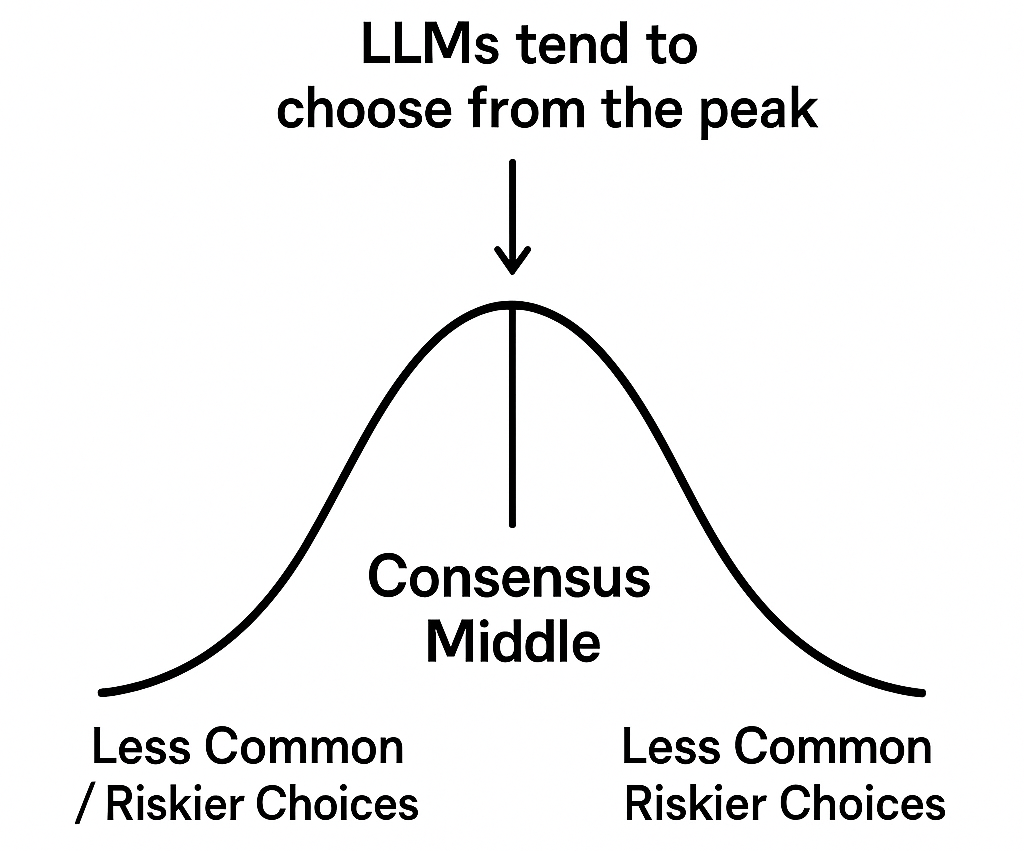Don't Write Like AI (4 of 101): Red Flag Words
It’s difficult to write about most AI writing tells because the advice usually isn’t “don’t do this.” More often, it’s “be aware of the tell and evaluate it in context with others.”
I know that can be confusing. The idea of context is especially true when it comes to word choice.
I don’t like when people make strict lists that ban AI from using certain words.
Why shouldn’t AI use a word if it’s accurate and helpful to the reader?
But ChatGPT can over use words, especially when it's for specific industries or explanations.
Think "unlock" for anything AI.
Or "empower" when talking about users or teams.
Or "robust" when talking about features.
That’s why we’ll call them red flag words. Just because you see one doesn’t mean AI wrote it. But it’s a red flag. Too many red flags, and it’s a red alert.
In this nuanced post, I’ll cover:
- Why common AI words are a problem
- What to do about them
- 3 prompts to help you manage them
Why Common AI Words Are a Problem
The words you use cause an emotion in your reader. The main problem I have with common AI words is they can trigger a range of negative emotions in your reader.
Here are some examples of common AI word choice that may trigger negative feelings:
- They’re industry clichés.
These words are so overused in certain fields that they lose meaning and make your content blend in.
- They’re vague and unspecific.
Words like “transformative” or “innovative” sound impressive but rarely point to anything concrete.
- They show up across brands and voices.
The same language can appear everywhere, making it hard to tell one company or writer from another.
- They create a false sense of clarity.
The writing looks polished, but the words don’t actually say much once you look closer.
What to Do About Common AI Words
In what I call the consensus middle, the LLMs chooses words that are typical.

Imagine a distribution curve filled with all the possible words AI could use to describe a topic.
The center of that curve is where the most common, “safe” words live — the ones the AI is most likely to choose.
For example, if you’re writing about change, ChatGPT will probably use transform or shift. These words are high-probability choices for describing change.
It's unlikely to output words like "upended, restructured, or morphed."
Additionally, LLMs prioritize concise language. So it's also unlikey to use a longer phrase to explain change, such as "give way to."
The Mindset
The problem with telling ChatGPT “don’t do this”
What I’ve found is that asking ChatGPT not to do something often limits its creativity. And I don’t like that. I want the words and sentences to be crafted with full creativity, then I can edit them as needed.
So as a general rule, I focus less on telling AI what not to do and more on nudging it toward what I want.
3 Prompts to Navigate Common AI Words
1. Identify what ChatGPT defaults to
This is part of what I call meta-prompting, where you ask ChatGPT to analyze itself.
Try:
What words or phrases does ChatGPT commonly use when writing about [TOPIC or INDUSTRY]?
Please include overused verbs, transitions, buzzwords, and clichés. Separate the list by type if possible.
Or:
List 20 words or phrases ChatGPT is most likely to use when writing about [TOPIC] in a professional tone. Group them by function such as verbs, adjectives, transitions, and value language.
2. Guide ChatGPT with a soft constraint
Once you’ve identified the common words, add them into your prompt like this:
Be mindful of common industry buzzwords like [LIST], and try to vary the language so they aren’t overused.
This gives direction without being too restrictive.
3. Block specific words if needed
If the soft prompt doesn’t work (and AI insists on using them — some AI habits are hard to break), you can be more specific:
Avoid these words: [LIST]. Use specific, concrete language and vary sentence structure to sound more human.
What Happens When You Ask ChatGPT for Its 2nd or 3rd Word Choice
Now, I’ve seen multiple people recommend prompts that ask ChatGPT to use words it’s less likely to think of.
The issue with this (and I’ve tried it myself) is that the sentences start to sound like you’re visiting crazy town.
It’s okay to use a unique word like morph to describe change. But when ChatGPT starts stacking unusual word choices back to back, the result is awkward, clunky, or even laughable.
Here’s what I mean:
Default (consensus middle):
The company transformed its operations to stay competitive in a changing market.
2nd or 3rd choice prompt (what people recommend):
The company morphed its internal systems to remain nimble in an evolving landscape.
That second sentence sounds like it’s trying way too hard. It’s technically “different,” but it doesn’t feel natural or helpful to the reader.
If you start writing too much of the second or third-choice word set, you’ve hopped on a quick train ride to crazy town.
List of Common AI Words
Here’s my personal list. If I see too many of these in a sentence or paragraph, it’s usually a giveaway that AI wrote it.
Innovation / Change / Strategy
- Unlock
- Transform / Transforming
- Revolutionize
- Future-proof
- Game-changer
- Strategic
- Shift / Shifts
- Modern
- Today’s
- Real (as in “real benefits” or “real change”)
- Supercharge
- Harness
- Leverage
- Optimize
- Streamline
- Fundamental / Fundamentally
- Unleash
- Enhanced
- Unprecedented
- Seamless
- Powerful
- Intuitive
- Comprehensive
- Tailored
- Scalable
- Agile
- Dynamic
- Streamlined
- Cutting-edge
- Best-in-class
- Next-generation
Business / Value Framing
- Enable
- Crucial
- Essential
- Key
- Robust
- Distinct
- Important
- Strategic (again)
- Elevated / Elevate
- Aligned / Align
- Proactive
- Explicitly
- Nuanced
- Innovative
- Intersection
Conversational or Transitional Cues
- Moreover
- The goal?
- The result?
- The bottom line
- Fundamentally
- Thrilled
- Delve
- Foster
- Emphasize
Descriptive Overuse or Misuse
- Staff (used repeatedly instead of “employees”)
- Real (again: “real-world,” “real problems”)
- Today’s / Modern
- Strategic (repeated here for how broadly it’s applied)
Words That Signal Hype or Persuasion
- Unlock
- Crucial
- Thrilled
- Transform
- Revolutionize
- Supercharge
- Game-changer
- Future-proof
- Unprecedented
- Real
- Cutting-edge
- Best-in-class
- Powerful
- Next-generation
Wrap-Up
Common words aren’t automatically bad. But if your writing leans heavily on them, it starts to feel empty, generic, and machine-written. Awareness is the first step. Then comes control.
